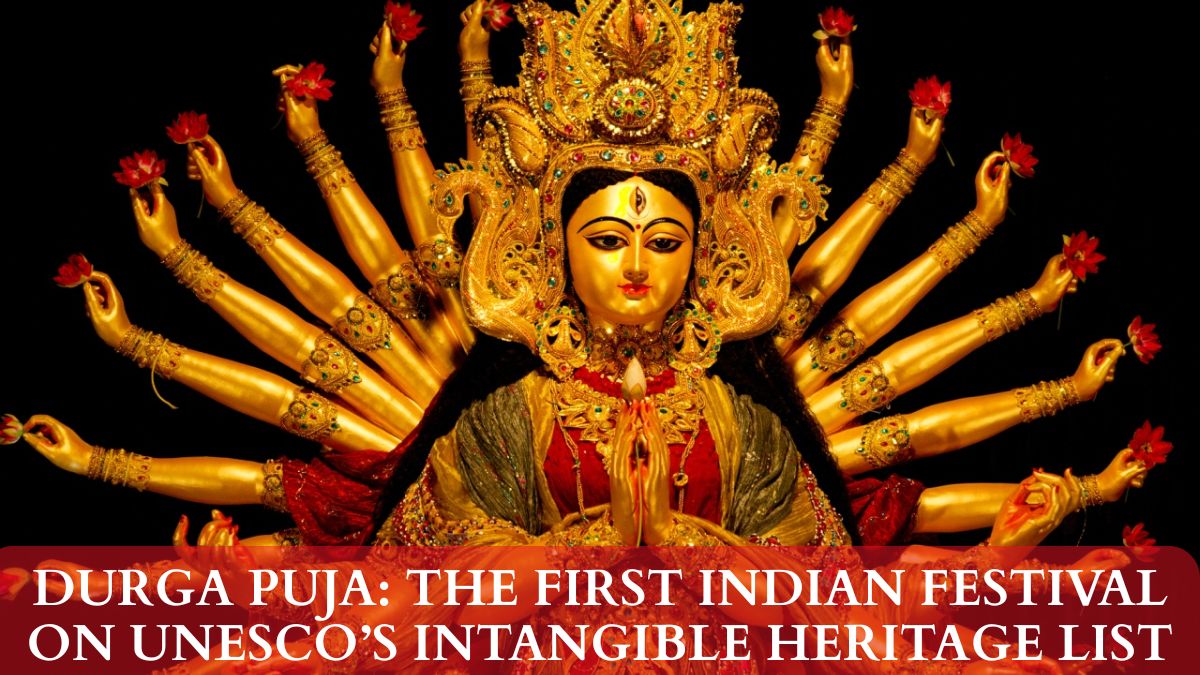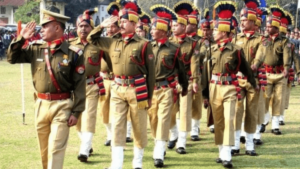Every autumn, the city of Kolkata transforms into a canvas of lights, art, and devotion. Streets bustle with millions of people, pandals (decorated pavilions) rise overnight, and the air fills with the sound of dhak drums. This is Durga Puja, the grand festival of Bengal, which has now earned its place on the world stage. Know more details about Durga Puja: The First Indian Festival on UNESCO’s Intangible Heritage List from this article.
Why Durga Puja in the News
Recently, UNESCO inscribed ‘Durga Puja in Kolkata’ on the Representative List of Intangible Cultural Heritage of Humanity.
This decision was taken during the 16th session of the Intergovernmental Committee of UNESCO in Paris.
What makes this recognition historic is that Kolkata Durga Puja is the first festival in Asia to achieve such global honor. UNESCO praised the festival for its inclusive nature—bringing together marginalized communities, women, artisans, and people from every walk of life into one shared celebration.
History of Durga Puja
Durga Puja’s roots in Bengal go back centuries. The first references to its grand celebrations are found in 16th-century literature, where zamindars (landlords) organized the puja as a community event. These landlords would finance the festivities, ensuring that the entire village could take part.
Over time, Barowari Puja (community puja) and Bonedi Barir Pujo (traditional household pujas) became popular traditions in Bengal. Today, these traditions continue alongside modern artistic innovations, blending history with contemporary creativity.
Kolkata’s puja is not just a religious event—it is a living cultural expression. The city becomes a giant art gallery, with clay idols, thematic pandals, folk performances, food stalls, and music all merging to create a carnival-like atmosphere.
Significance
- Durga Puja is more than worship—it is a celebration of feminine power, art, and inclusivity.
- It brings together people beyond caste, creed, or class, uniting them in joy.
- It sustains traditional crafts like idol-making, textile art, music, and folk dance.
- Economically, it is a powerhouse—according to a 2019 British Council report, the creative economy of Durga Puja was valued at ₹32,000 crore, contributing 2.58% of West Bengal’s GDP.
- It is also one of India’s largest cultural carnivals and street art festivals, drawing tourists from across the globe.
- The recognition by UNESCO is not just about a festival—it is about acknowledging how art, faith, and community spirit can empower societies and preserve cultural heritage.
UNESCO’s List of Intangible Cultural Heritage Sites (India)
India is home to 14 cultural elements that are recognized by UNESCO under the Intangible Cultural Heritage (ICH) list. Below is a glimpse:
|
Intangible Cultural Heritage
|
Place/Community |
Year of Inscription
|
| Durga Puja | Kolkata, West Bengal | 2021 |
| Tradition of Vedic Chanting | Pan-India | 2008 |
| Ramlila – the Traditional Performance of the Ramayana | North India | 2008 |
| Kutiyattam – Sanskrit Theatre | Kerala | 2008 |
| Ramman – Religious Festival and Ritual Theatre | Uttarakhand | 2009 |
| Mudiyettu – Ritual Theatre of Kerala | Kerala | 2010 |
| Kalbelia Folk Songs and Dances | Rajasthan | 2010 |
| Chhau Dance | West Bengal, Jharkhand, Odisha | 2010 |
| Buddhist Chanting of Ladakh | Ladakh | 2012 |
| Sankirtana – Ritual Singing and Drumming | Manipur | 2013 |
| Traditional Brass and Copper Craft of Punjab (Thatheras of Jandiala Guru) | Punjab | 2014 |
| Nawrouz (Nowruz) | Pan-India (shared with several countries) | 2016 |
| Kumbh Mela | Uttar Pradesh, Uttarakhand, Bihar, MP | 2017 |
| Durga Puja | Kolkata, West Bengal | 2021 |



 Assam Police Constable Recruitment 2026 ...
Assam Police Constable Recruitment 2026 ...
 PSSSB Assistant Chemist Admit Card 2026 ...
PSSSB Assistant Chemist Admit Card 2026 ...
 APPSC Exam Dates 2025-26 Out For Various...
APPSC Exam Dates 2025-26 Out For Various...





 Adda247 Job portal has complete information about all Sarkari Jobs and Naukri Alerts, its latest recruitment notifications, from all state and national level jobs and their updates.
Adda247 Job portal has complete information about all Sarkari Jobs and Naukri Alerts, its latest recruitment notifications, from all state and national level jobs and their updates.



